The Nemi Ships, extraordinary remnants of the Roman era, are historical enigmas that have fascinated scholars and enthusiasts alike.
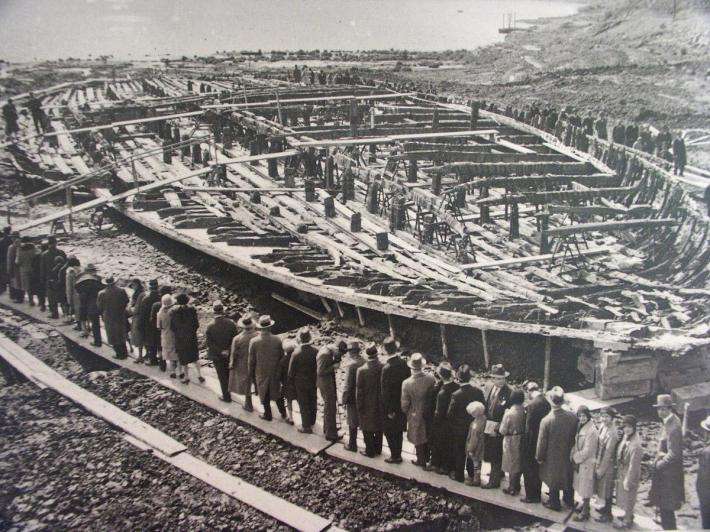
Constructed during Emperor Caligula’s reign between 37 and 41 AD, these gargantuan vessels were not mere ships, but architectural wonders symbolizing both the grandeur and the decadence of ancient Rome.
Located on the tranquil Lake Nemi, the ships represented a fusion of advanced Roman engineering and artistry, providing invaluable insights into the society of the time.
However, the exact purpose of the ships – whether they were floating palaces for indulgent feasts, or sacred temples dedicated to Diana Nemorensis – remains a topic of lively debate among historians.
From their mysterious sinking after Caligula’s assassination, to their dramatic recovery in the 20th century, and their eventual unfortunate destruction during World War II, the story of the Nemi Ships weaves a compelling narrative of opulence, discovery, and loss.
Origins Of The Nemi Ships
The Nemi Ships owe their existence to the whims of the Roman Emperor Caligula, who reigned from 37 to 41 AD.
Known for his eccentricities and extravagant lifestyle, Caligula commanded the construction of these enormous floating palaces in a secluded spot, away from the bustling heart of Rome.
Lake Nemi, a small volcanic crater lake located twenty miles southeast of Rome, served as the perfect hideaway for this grand endeavor.
The Nemi Ships were not ordinary vessels by any means. Measuring approximately 70 and 73 meters long, these were veritable leviathans, dwarfing most other ships of the era.
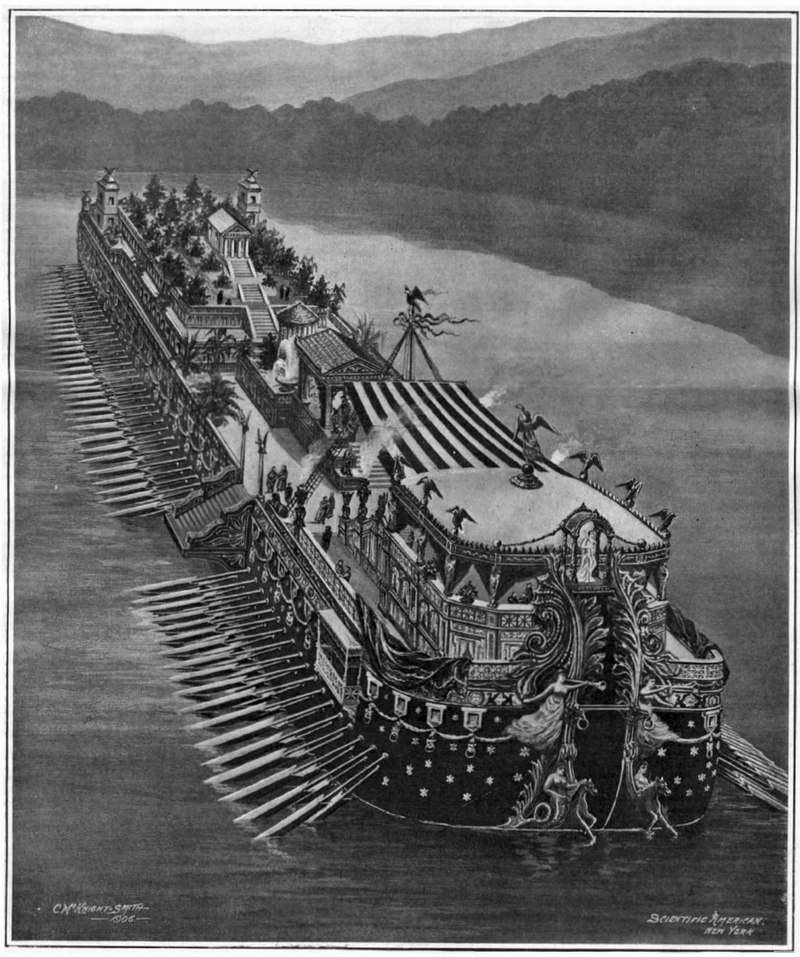
They were designed to impress and awe, demonstrating not only the wealth and power of the emperor but also the technical prowess of Roman engineers.
These vessels were built with more than mere function in mind. The attention to aesthetic detail on both ships was extraordinary, reflecting a grandiosity typical of Roman architecture and art.
The finest materials were employed in their construction and adornment. Intricate mosaics were laid to form stunning floors, a rich palette of color dancing underfoot. Marble of the highest quality was used extensively, adding an aura of elegance and opulence to the ships’ interiors.
Gilded decorations adorned the walls and ceilings, catching the light and turning these vessels into floating masterpieces.
However, the Nemi Ships were more than just aesthetic wonders; they were also triumphs of marine architecture.
For instance, they incorporated the use of bilge pumps, a relatively advanced feature that wasn’t commonplace until the late Middle Ages.
These pumps were designed to evacuate water from the ship’s hull, thereby ensuring the vessel’s buoyancy and stability.
Speculations On Function
The exact function of the Nemi Ships has remained a source of intrigue and speculation among historians and archaeologists.
Given the lavishness of their construction and the era during which they were built, their purpose undoubtedly extended beyond mere transportation.
One prevalent theory posits that these grand ships were primarily used for pleasure and leisure.
Given Emperor Caligula’s infamous reputation for indulgence and excess, it’s plausible that these ships served as opulent venues for extravagant parties, feasts, or pleasure cruises.
The ships’ luxurious interiors, equipped with top-quality marble, intricate mosaics, and gilded decorations, certainly suggest a setting designed for enjoyment and indulgence.
These floating palaces may have provided a secluded and exclusive escape for the emperor and his favored guests, away from the prying eyes of the common folk.
Alternatively, some historians propose a religious purpose for the Nemi Ships, suggesting they were floating temples to the goddess Diana Nemorensis, also known as Diana of the Woods.
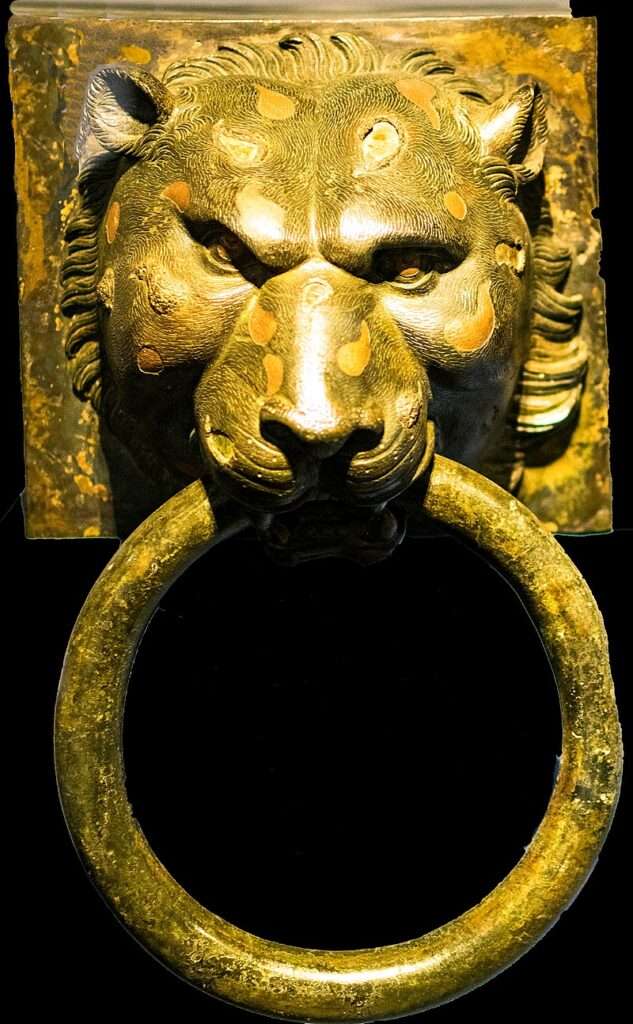 One of the many artefacts found on the Nemi ships site.
One of the many artefacts found on the Nemi ships site.
This theory is supported by the sacred status of Lake Nemi and the known practice of water-based worship in Roman times.
Here, the opulence of the ships could be seen not as a display of decadence, but as a tribute to the goddess’s grandeur.
Yet another theory is that the ships served a dual purpose, fulfilling both religious and recreational functions.
They might have hosted religious ceremonies to honor Diana Nemorensis, while also providing a venue for Caligula’s extravagant feasts and parties.
Ultimately, the lack of specific historical documentation leaves the exact purpose of the Nemi Ships a mystery.
However, these varied theories all paint a picture of an era marked by extraordinary opulence and ritual.
Whether they were the stage for divine worship, the setting for lavish parties, or both, the Nemi Ships stand as remarkable emblems of Roman luxury and grandeur.
The Sinking And Attempts At Salvage
After Caligula’s assassination in 41 AD, the fate of the Nemi Ships took a tragic turn.
They were intentionally sunk to the bottom of Lake Nemi, but the reasons behind this act remain unclear.
Some suggest that the ships were deliberately submerged to safeguard them from potential desecration or vandalism, while others argue that the sinking was a form of posthumous revenge against Caligula, aimed at obliterating his symbols of extravagance.
For nearly 1,900 years, these marvels of Roman engineering lay concealed beneath the lake’s surface, their existence known only through historical accounts and local folklore.
Attempts to raise the ships were made intermittently throughout the centuries, fueled by the desire to uncover the hidden treasures of Lake Nemi.
In the 15th century, one notable attempt was undertaken by Cardinal Prospero Colonna. Inspired by references in ancient sources, he attempted to drain the lake to access the ships.
However, the undertaking proved too monumental, and the attempt was ultimately abandoned.
It wasn’t until the 20th century, under the fascist regime of Benito Mussolini, that the Italian government launched a substantial, concerted effort to recover the Nemi Ships.
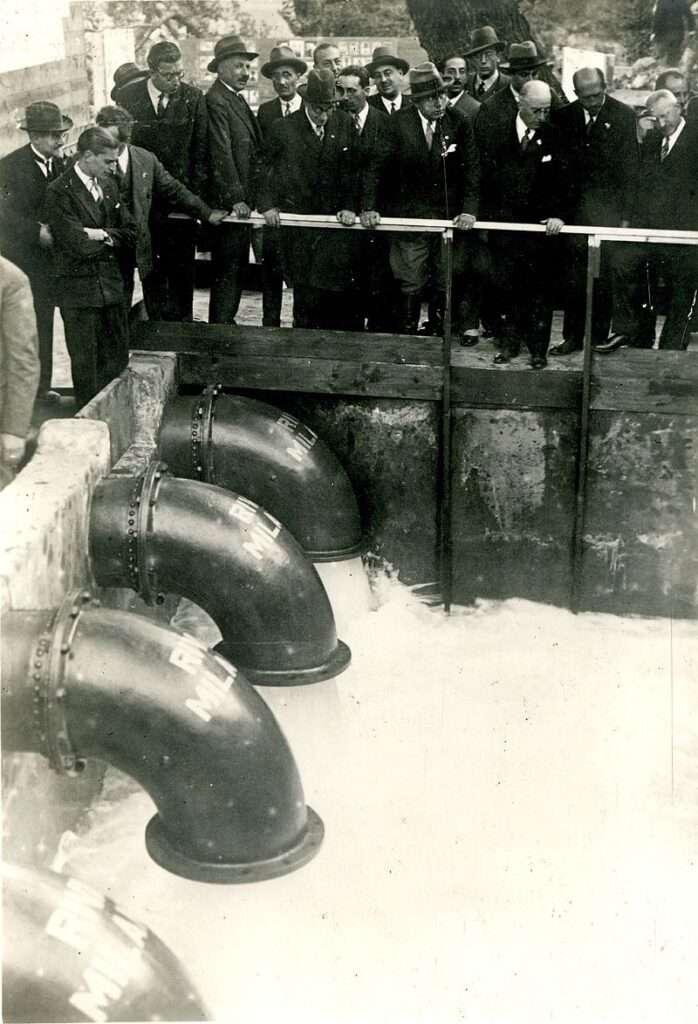 Benito Mussolini observes the system draining Lake Nemi, October 20, 1928.
Benito Mussolini observes the system draining Lake Nemi, October 20, 1928.
A radical approach was adopted: instead of attempting to raise the ships, the level of the lake was significantly lowered by constructing a new drainage tunnel, effectively exposing the shipwrecks.
The operation, carried out from 1927 to 1932, was laborious and fraught with challenges.
The ships’ sheer size and delicate state after centuries underwater required meticulous handling to prevent damage during the excavation process.
Despite these difficulties, both ships were successfully recovered, offering the world its first real glimpse of these remarkable vessels since their sinking nearly two millennia prior.
 The hull of one of the Nemi ships revealed after drainage of the lake.
The hull of one of the Nemi ships revealed after drainage of the lake.
Destruction Of The Nemi Ships
Following the successful recovery of the Nemi Ships, these enormous vessels were transported to a dedicated museum in the small town of Nemi.
Here, the ships were subjected to rigorous examination and restoration processes to preserve and protect their structure and artwork from further degradation.
The Nemi Ships, after nearly two millennia under water, were finally available for the world to behold.
Historians, archaeologists, and scholars flocked to the museum to study these masterpieces of ancient engineering, while the general public admired the grandeur and the aesthetic brilliance that the ships embodied.
The ships served as tangible evidence of Roman opulence, their luxurious interiors providing fascinating insight into the extravagant lifestyle of the Roman elite during Caligula’s reign.
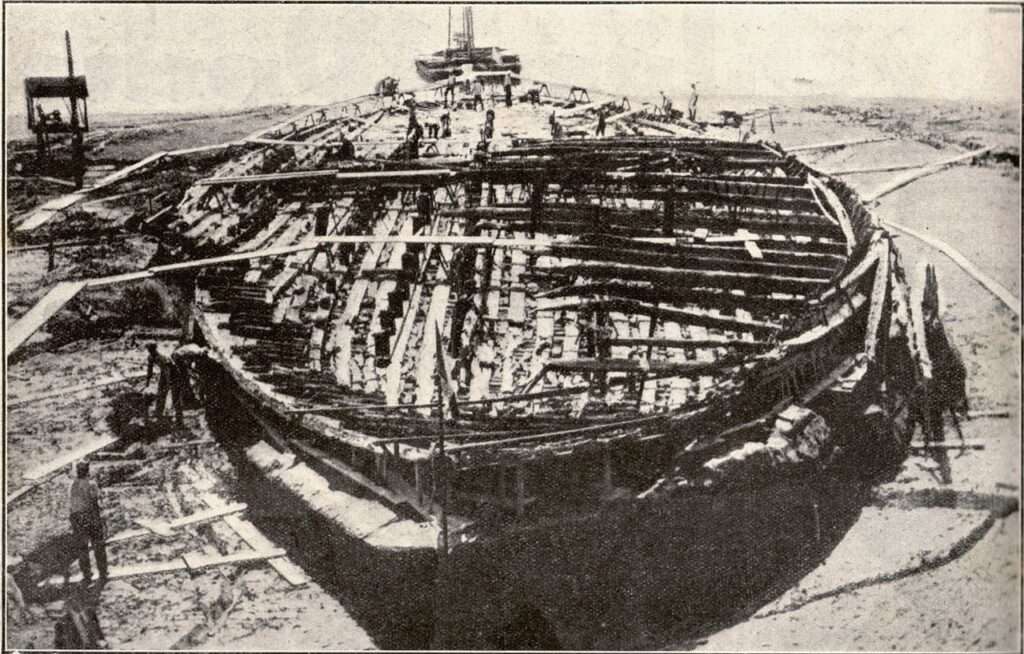 Another shot of one of the Nemi ships.
Another shot of one of the Nemi ships.
However, this period of study and admiration was tragically short-lived.
In 1944, during World War II, the museum housing the Nemi Ships was set ablaze.
The details surrounding this catastrophic event are somewhat murky, with some reports suggesting that German forces started the fire during their retreat, while others claim that it was due to Allied artillery fire.
Regardless of the cause, the fire utterly destroyed the Nemi Ships, reducing these priceless historical artifacts to charred remnants. The blaze was so intense that little could be salvaged from the ruins.
Today, all that remains of these floating palaces are a few remnants, historical accounts, and photographs taken during their brief period of display.





